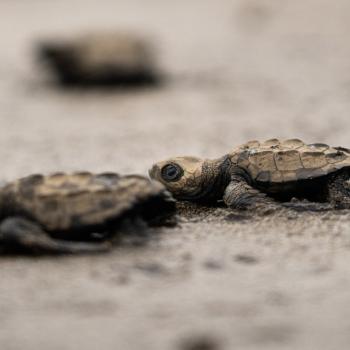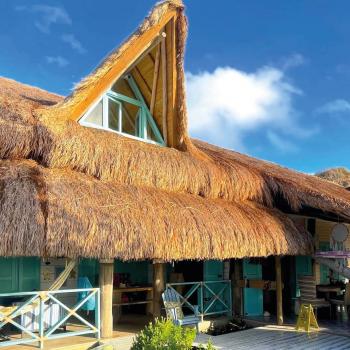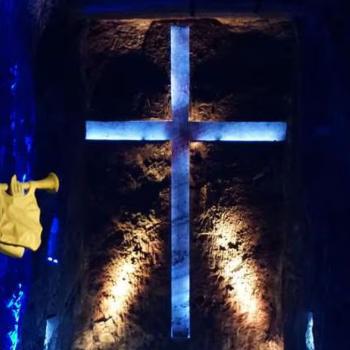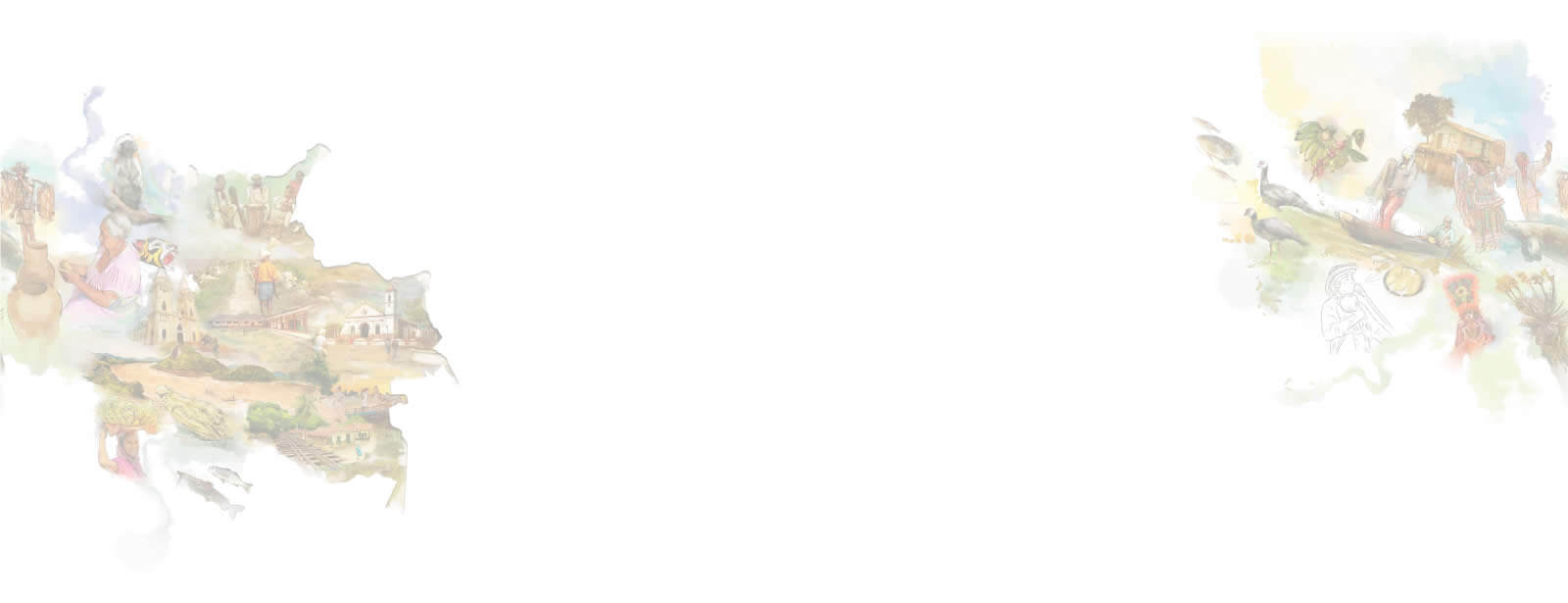When we think of tourism, the first thing that comes to mind is often exotic destinations and relaxing getaways. However, tourism is much more than that—it represents an opportunity to boost economic development and overcome cultural differences.
As such, each September 27, we celebrate World Tourism Day: an opportunity to spread awareness about the importance of this practice which enriches cultural, economic, and social sectors.
Did you know? Every year, the World Tourism Organization chooses a theme for the occasion out of relevant subjects for the industry. Likewise, it also picks a different country to host the celebration.
So why not make the most of this World Tourism Day to discover a bit about Colombia? This beautiful country with stunning diversity is made up of six tourist regions that deserve to be explored individually. Keep reading, you’ll find out why:
Celebrate Tourism Day in the Greater Colombian Caribbean
Also, it’s an immensely diverse land where you'll find snow-capped mountains, seaside dunes, delightful One of the main qualities of this region is that it’s full of warm-hearted people who are happy to welcome all outlanders. Also, it’s an immensely diverse land where you'll find snow-capped mountains, seaside dunes, delightful beaches, coral reefs, and much more. Likewise, it’s the place where numerous origins have come together over the years: Amerindian, African, Caribbean islander, European, and Middle Eastern roots have come together to create a culture that’ll show you why this region is much more than sun and sea.

The Walled City of Cartagena, a tourism gem to visit on Tourism Day.
Santa Marta
Santa Marta—also nicknamed ‘la Samaria’—is the capital of the Magdalena department. It’s one of the main places to visit if you’re a lover of ecotourism. From here, you’ll go on to relax on white-sand beaches with crystal-clear waves, conquer the mysterious Lost City, go scuba-diving in Taganga, trek across the Tayrona National Park, and recharge your batteries in Minca.
Cartagena de Indias
Cartagena, nicknamed ‘La Heroica’, is the capital of the Bolívar department, as well as one of the most romantic cities and best-preserved colonial destinations you’ll ever visit. Discover the colorful and lively streets of Walled City, unwind by the crystal-clear waters of Isla Barú and Islas del Rosario, play in the Totumo Mud Volcano, and try the exotic fruits that Palenqueras offer you in the streets.
Barranquilla
Barranquilla, also known as ‘La Arenosa’, is the capital of the Atlántico department. Here you’ll find colorful streets and native music—elements that give the city a year-round carnival vibe. When in this city you simply must visit the Gran Malecón del Río, where you’ll enjoy the breeze and experience life like a local; las Flores, a marvelous place where you can gaze across the point where the Magdalena River flows into the Caribbean Sea; and El Prado neighborhood, where you’ll fall in love with the Republican-style villas.
San Andrés and Providencia
San Andrés and Providencia, Colombia’s only island region, is located in the western Caribbean Sea, near Nicaragua. These idyllic island paradises have lots to offer, like driving a golf buggy across the island, snorkeling with sea turtles, diving with sharks, and learning about the captivating creole culture.
Palomino
Palomino is a magnificent town in the La Guajira department, surrounded by the lush mountains of the Sierra Nevada and an impressive sea. Start the fun with a tubing trip on the Palomino River, be amazed by the waterfall of Quebrada Valencia, hike to the snow peaks of the Sierra Nevada, and walk along the beach in the morning.
Celebrate Tourism Day in the Western Colombian Andes
There’s a land where mountains of coffee and flowers come to life with a charming paisa culture. It’s called the Western Colombian Andes, and you’ll find innovation in its magnificent cities and charming traditions in its towns across the mountains. It’s also the territory where the world-famous Coffee Cultural Landscape comes to life.

Tourism Day helps us share with the world iconic Colombian attires like the traditional poncho and sombrero aguadeño worn by this man.
Medellín
Medellín is the capital of the Antioquia department and the second-largest city in Colombia. Here, it feels like spring the whole year-round. Besides the nice weather, you’ll be delighted by the quaint Castillo Museum and Gardens, dumbstruck by the view atop the Peñol de Guatapé, dazzled by the lush nature of Arví Park just a cable car ride away, and charmed by the vibrant urban lifestyle of Comuna 13.
Manizales
Manizales, ‘the City of Open Doors’, is the capital of the Caldas department and the heart of the Coffee Cultural Landscape. Here, the snow-capped volcanoes (visible from town) and the paramo ecosystem of Nevados National Park will leave you speechless. Go birdwatching at Rio Blanco and enjoy the view atop Chipre Viewpoint or the Manizales Cathedral, the tallest in Colombia.
Jardín
Jardín is a well-preserved colonial town in the Antioquia department. It may be small but its friendly people and plenty of things to see will make you want to stay. You can take a trip through town on a Tuk-tuk tour, where you’ll get to see lush vegetation, flowing rivers, colorful façades, and ancient churches. You can also bathe in La Cueva del Esplendor or the Salto del Ángel waterfalls.
Salento
Salento is a fanciful town in the Coffee Cultural Landscape, located in the northeastern Quindío department. Once you get here, explore its picturesque streets and houses and try making handicrafts before heading out to the main attraction: Cocora Valley, a truly surreal landscape where you’ll be awed by the iconic 60-plus-meter-tall wax palms, Colombia’s national tree.
Filandia
Filandia is a picturesque town in the northern end of the Quindío department best-known for its lush, green mountains, stunning views, and snow-capped mountains in the distance. You’ll also fall in love with the nicely preserved colonial architecture and enjoy strolls across the fields of its coffee farms, a charming experience with the owners during which you’ll get a genuine cup of coffee while you appreciate nature.
You may be interested: Discover equestrian tourism in Colombia.
Celebrate Tourism Day in the Eastern Colombian Andes
There’s a region where you can witness Colombia’s history and future unfurling at the same time: the Eastern Colombian Andes. This land of heritage and skyscrapers will carry you into an age of myths and colonial towns across legendary moors and valleys.

The Salt Cathedral of Zipaquirá is featured on many Tourism Day places-to-visit lists.
Bogotá
Bogotá, the capital city of Colombia, lies atop the Andes mountains in a sprawling savannah nestled by imposing peaks that beautify the city and give it a fascinating appeal. As the largest city in Colombia by far, here you’ll find plenty of things to do. For instance, you can visit La Candelaria, the city’s historic downtown; hike up Monserrate to get a stunning view of the city; enjoy the landscape from La Calera viewpoint, and visit all of the city’s cultural and historical museums.
El Cocuy
El Cocuy is a small colonial town located in the Boyacá department, best-known for its proximity to Cocuy National Park. While here you can depart in search of one of Colombia’s greatest natural treasures: a range of over 20 snowy peaks across surreal landscapes. Additionally, you’ll feel welcomed by its joyous people, be amazed by its ancient infrastructure, and learn their culture from their old-time handcrafts.
Barichara
Barichara is often considered the most beautiful town in Colombia. This architectural gem of the Santander department has a rich history and is surrounded by spectacular landscapes that’ll surely take it to the top of your “to-visit” list. Once there, take a Tuk-Tuk tour around town to learn first-hand about the history of the colonial façades, admire the stunning viewpoints, and learn more about the extreme sports and adventures to practice later on.
Villa de Leyva
Villa de Leyva is a charming colonial town located in the Bocayá department. Its cobblestone streets and picturesque 16th Century architecture will make you feel like you’ve traveled in time, while the mesmerizing Blue Ponds, archeological sites, and splendid vineyard tours will take you on further adventures.
Zipaquirá
Zipaquirá is a colonial town in the Cundinamarca department, just a couple of hours from Bogotá, well-known for its impressive Salt Cathedral: A Roman Catholic church built inside the tunnels of a former salt mine. To complement this trip, don’t miss out on the charming Spanish architecture buildings of the main square, the archeological and historical museums, and the tranquility of its natural surroundings.
Celebrate Tourism Day in the Colombian Pacific
There is truly is a breathtaking land where spectacular waterfalls punctuate the lush mountains and amazing beaches among a unique flavor of forest and sea: the Colombian Pacific. This megadiverse region is also influenced by various origins, among which Afro-Colombian culture thrives proudly.

The waters of Gorgona island are an ideal diving destination to check out this Tourism Day.
Cali
Cali, nicknamed “the Branch of Heaven,” is the capital of the Valle del Cauca department. This colorful and musical city, despite not having invented it, is considered the world capital of salsa and, therefore, the ideal place to take dancing lessons. But there are lots to do beyond dancing: you can also stroll through San Antonio, the city’s oldest neighborhood and the epicenter of artistry and history, then walk up to Cristo Rey, a 26-meter-tall statue of Christ that watches over the city, and lastly, chill in the shade along Bulevar del Río.
Bahía Solano
Bahía Solano is an idyllic ecotourism destination of the Chocó department well-known for its landscapes, beaches, waterfalls, and overall biodiversity. Here you’ll get to witness the arrival of humpback whales and sea turtles, be delighted by the jungle’s lush greenery and species diversity, and recharge your batteries by bathing in the waterfalls.
Nuquí
Nuquí is a natural gem of the Chocó department surrounded by the Baudó mountains and the Pacific Ocean. Here you can go whale watching, enjoy its calm beaches, go surfing to ride amazing waves, and appreciate the fauna of the Utría National Park nearby.
Buenaventura
Buenaventura, Colombia’s main port on the Pacific Ocean, is a city defined by the sea. Nearby you’ll find an ecotourism site where you can enjoy beaches and waterfalls, as well as the Uramba Bahía Málaga National Park.
Guapi
Guapi is a small town in the Cauca department on the banks of the Guapi River and where you can sail off to Gorgona island, one of the country’s most stunning and diverse natural parks where you can appreciate the fauna and flora that inhabit this megadiverse island.
Celebrate Tourism Day in the Colombian Amazon-Orinoco
There is a vast, diverse region, covering nearly half of the country where mighty rivers cross sacred rainforests and plains, and where indigenous and llanero culture thrive alongside nature. The Colombian Amazon-Orinoco, the green heart of Colombia, awaits.

Vast rivers cross the Colombian Amazon-Orinoco and invite you to do so, too.
Leticia
Leticia, the capital of the Amazonas department, is the southernmost city in Colombia; on the border with Peru and Brazil, this quaint city will give you just the tranquility you were needing. Visit the nearby nature reserves of Lagos de Tarapoto y Loretoyacu and Calanoa to explore the mysterious rainforest, take part in indigenous handicraft workshops, and practice water sports in non-other than the longest river on Earth: The Amazon.
La Macarena
La Serranía de la Macarena is a natural treasure in the Meta department where you’ll get to discover the famous melted rainbow: Caños Cristales, a colorful river that will mesmerize you like no other sight on Earth. Maybe bathing in the natural pools of Caño Piedras will let you take it all in afterward.
San José del Guaviare
San José del Guaviare is the capital of the Guaviare department, a place where you’ll meet the fascinating Nukak culture, the last true nomadic hunter-gatherer community on the planet. From here, you’ll also get to visit Cerro Azul, where 12,000-year-old rock paintings across miles of cliffsides will take you back to prehistoric times.
Inírida
Inírida is the capital of the Guainía department, an ancestral land in which you’ll get to experience: authentic indigenous cultures, natural treasures like the Estrella Fluvia del Oriente, a primer wetland ecosystem, and the unique view of the Cerros de Mavecure, three massive monoliths located on the eastern end of the country.
Mitú
Mitú is a small town located in the Vaupés department which belongs to the heart of the Amazon. Here, you’ll get to witness a truly unique natural environment not found anywhere else in Colombia or the world.
Discover: Sierra Nevada de Santa Marta: Land of Snow and Indigenous Peoples.
Celebrate Tourism Day in the Colombian Massif
There’s a region of ancestral origins in which archeological parks, indigenous cultures, and otherworldly nature live in harmony. This land is known as the Colombian Massif, and within it, you will come in contact with natural and cultural treasures unlike any other on Earth.

This Tourism Day plans your next visit to the Colombian Massif’s San Agustín Archeological Park.
San Agustín
San Agustín is best-known as the archeological capital of the Huila department. In this amazing destination, you’ll come in contact with a long-lost civilization at the San Agustin Archeological Park. You’ll also witness the narrowest point of Colombia’s most important river at the Magdalena strait.
Popayán
Popayán, nicknamed ‘the White City,' is the capital of the Cauca department. The colonial ambiance of its streets is filled with delectable aromas of one of the country’s best culinary scenes, whereas the greatest vestige of pre-Columbian cultures is the imposing Morro de Tulcán pyramid. Just a couple of hours from the city, you’ll get to explore the impressive Puracé volcano.
Villavieja
Villavieja is a small town of the Huila department on the banks of the Magdalena River. From here, you can visit the fascinating Tatacoa Desert, the second largest arid territory in Colombia. This dessert is the perfect getaway destination with charming and surreal landscapes of varying ochre hues and a perfect spot for stargazing at night. If the heat gets too intense during the day, you can always swim at the Los Hoyos natural pool.
Isnos
Isnos, also in the Huila department, offers yet more impressive pre-Columbian stone carvings at the Alto de Los Ídolos Archeological Park. For some adventure, you can head to Salto del Mortino, an impressive waterfall. Also, Salto Bordones, the highest in all of Colombia.
We love celebrating Tourism Day because it doesn’t just help us share with the world our immense natural and cultural heritage, but because it also allows all of it to thrive and develop. Thanks to tourism, our myriad destinations and experiences are well cared-for and admired, and the most welcoming place on Earth can continue sharing the charm of its six regions.
We love celebrating Tourism Day because it doesn’t just help us share with the world our immense natural and cultural heritage, but also because it allows all of it to thrive and develop. Thanks to tourism, our myriad destinations and experiences are well-cared-for and admired, and the most welcoming place on Earth can continue sharing the charm of its six regions.























